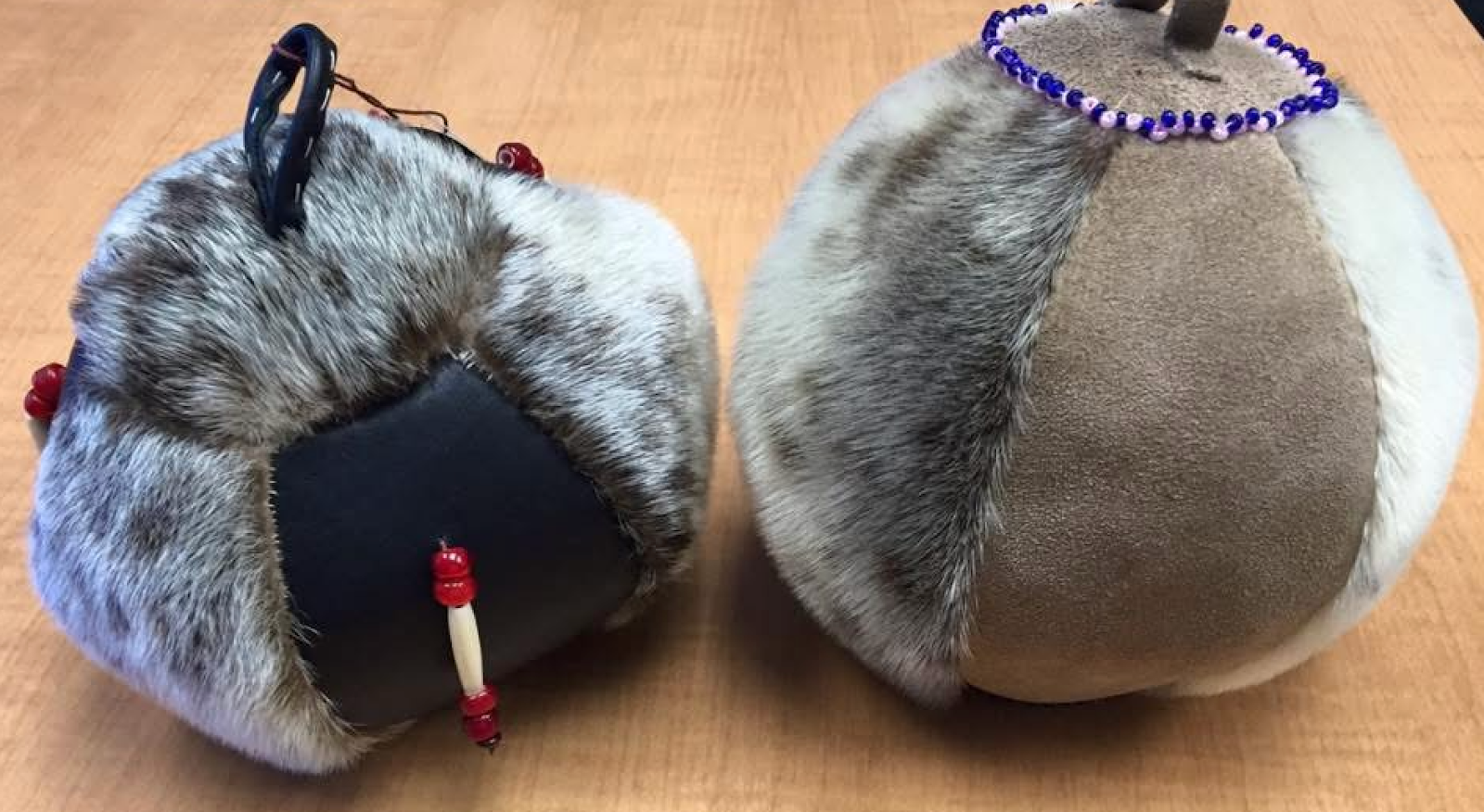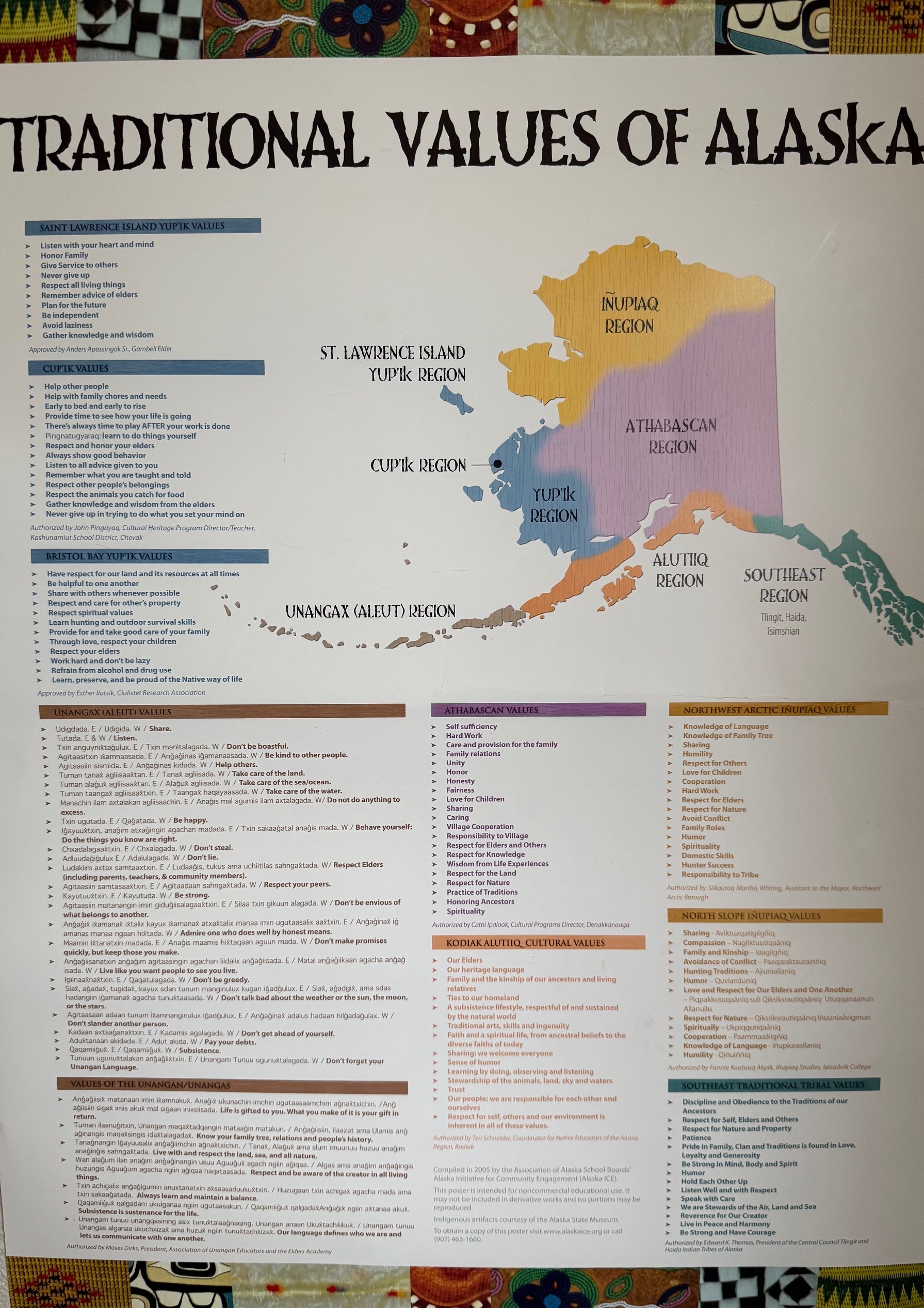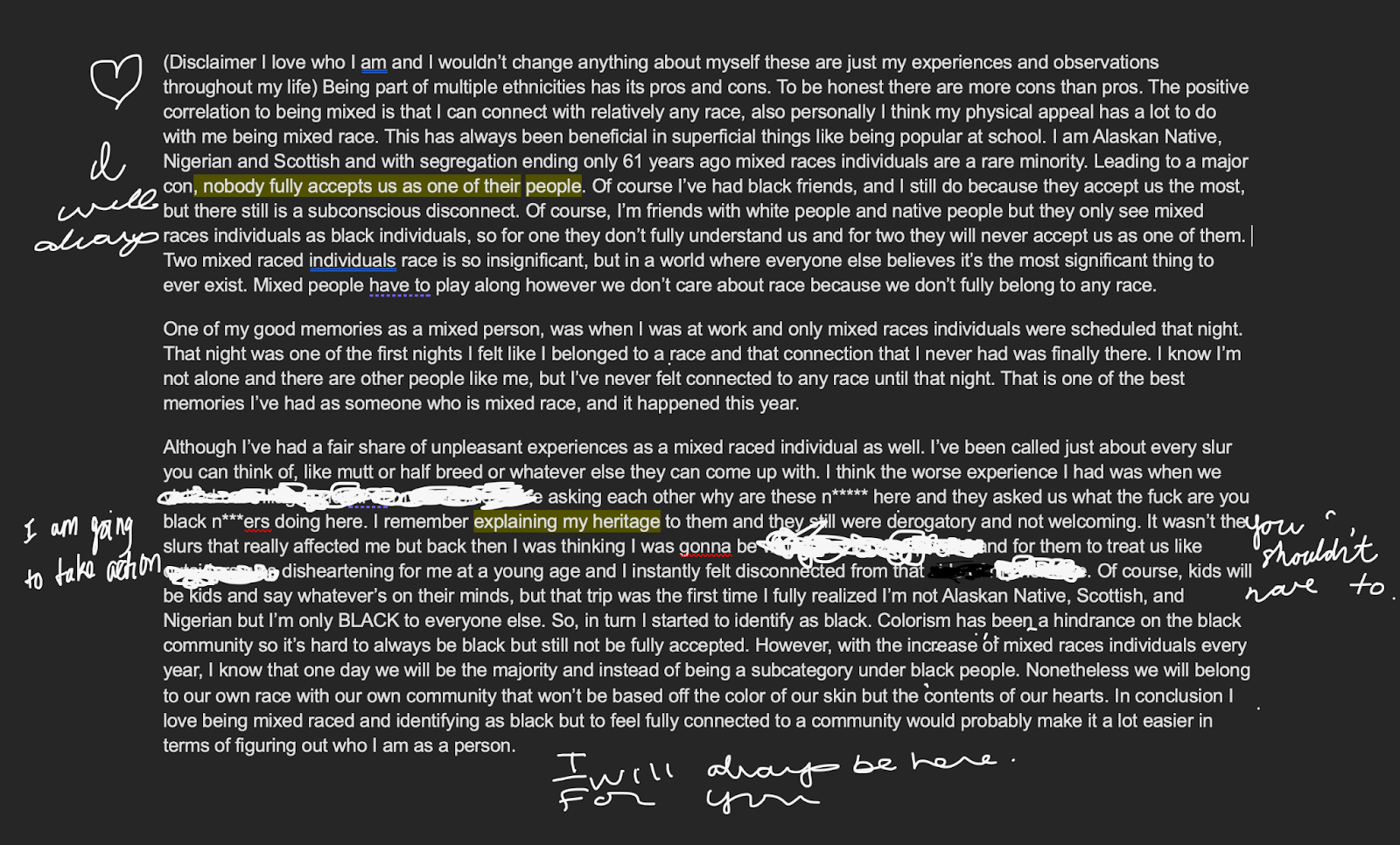
Handmade sealskin balls used for multiple Native games including: One Hand Reach, Alaskan High Kick, One and Two foot High kick, and Toe Kick. Yatibaey Evans.

Handmade sealskin balls used for multiple Native games including: One Hand Reach, Alaskan High Kick, One and Two foot High kick, and Toe Kick. Yatibaey Evans.
By Yatibaey Evans
Spring 2025, FORUM Magazine
Show respect to others - each person has a special gift
Share what you have - giving makes you richer
Know who you are - you are an extension of your family
Accept what life brings - you cannot control many things
Have patience - some things cannot be rushed
Live carefully - your actions have consequences
Take care of others - you cannot live without them
Honor your Elders - they show you the way in life
See connections - all things are related
Humor1
VALUES LIKE THESE have been embraced by people since time immemorial. Communities, families, and friendships thrive together when values are at the core of their relationships. In Alaska Native and other Indigenous communities, people passed these ways of life from one generation to another through oral storytelling and life’s demonstration. When you stray too far away from your core values, something will give you a nudge back to remind you. The nudge can be overtly loud and in your face, or sometimes simply a whisper. The choice to listen or not is always up to you.
The value of respecting others, all things, is something my grandmother instilled in me since I was a little girl. I remember her teaching me to shake all my Elders' hands when seeing them. If there were clothes on the floor, I should pick them up. When a boy was sitting with his legs out, or if his shoes were left in the way, she warned me not to step over them. She taught me how to cut fish with respect, always keep my area clean of blood, especially between fish.
I’m thankful my grandma and parents demonstrated Alaska Native values in their lives. It taught me to love all people. It taught me to be empathetic. They taught me to respect all things. There is a tremendous amount of forgiveness one must learn to live in unconditional love. Although maybe it’s just simple, forgive, let it go, let them be who they want to be, forgive.
Embarking on my journey, I had the amazing honor to run the Alaska Native Education (ANE) program for the Fairbanks school district and bring these millennia-old values along with me. I wanted to make a positive impact on all kids going through our education system. As someone who had experienced quite a bit of turmoil within school and knew many others who also experienced overt and subvert racism, I wanted to make it better for younger generations. How can you change the trajectory of a society, though? I thought about how some people become racist and some don’t. I believe it’s through the words they hear and the examples they are shown. How could the program I led effectively create change within such a large system? This took many different approaches. One of the ways was by educating the educators about Alaska Native history, cross-cultural communication, and classroom best practices.
To change people’s perceptions, I believe you first have to connect emotionally with them. I asked a multitude of groups, ranging from Elders to Kindergarteners, “What do you look for in a friend?” As answers flooded in, I wrote the answers down: “trustworthy, respectful, good listener, helpful, loyal, kind, and fun.” Each group that I asked this question to came up with similar answers. Participants would then look at the Alaska Native values poster and see if there was a similar value on the poster to what we look for in a friend. If there were, a star would be drawn next to our best friend’s characteristics. No matter the demographics of the different groups, every character we defined was starred. Although we come from an expansive number of backgrounds, cultures, and experiences, we all hold the same values in our hearts.

Traditional Values of Alaska poster.
The ANE program also worked to expand friendships across cultures, offering the Annual Literacy Challenge for all K-12 students. Students were challenged with different projects that inspired them to learn about amazing Alaska Native people like Katie John, Elizabeth Peratrovich, John Fredson, Howard Rock, Alberta Schenck, Ada Blackjack, and other Elders. It was incredible to see teachers share with their entire classroom the life stories of so many Alaska Native people. The artwork and writing that the children produced were creative, beautiful, and inspiring. High school students had a unique challenge: interview an Alaska Native Elder and share a short film. Some of the adolescents accompanied Elders on hunting trips, others visited in their homes, and some met at coffee shops. It was difficult for the ANE Parent committee to pick the top 4 in every category because we were always impressed by every child’s work to learn more about Alaska Native people and the effort they put into their projects. Everyone was invited to the fall celebration of our community’s cultures, where the kids were acknowledged and given awesome prizes donated by local businesses. While all this incredible work was being done by the ANE program in collaboration with Fairbanks Native Association and the Tanana Chiefs Conference, I was and continue to raise four miraculous sons.
My sons are from several different cultures from my side of the family and their fathers, but to many people, they appear Black. As their mom, I know their culture, I know their race, I know where they come from, but most importantly, I know their spirit. I don’t think of them by their outward appearance,2 I think of them by their inward being. When my kids were called the N word, one of my sons didn’t want to wear his regalia to school, and others didn't want to join NYO. I was crushed each time. Despite the incredible changes implemented in the school district, my children were still made to feel some kind of way about their cultural identities.
Let’s be people who extend beyond words and move into action that demonstrates our values of respect, love, and forgiveness.
I had multiple conversations with my sons to help nurture their self-confidence and try to grow resilience in them. Even though I worked hard to change the environment for all kids, it was sad to know that my kids had some of the same experiences as I did growing up.
I asked my three eldest children, ages 16-24, if they would answer a few questions: What is it like to be a part of multiple ethnicities? What is a memorable experience about being from multiple ethnicities that you’ve had that is good? Please share an unpleasant experience having to do with your perceived identity. Please add anything else you’d like to share.
Only one of them was comfortable enough to share because the topic of identity and the treatment thereof is sensitive. I am retracting some of his response because it is so painful. After all, I didn’t know the deep level of hurt his experiences have incited. I want to take action for myself, as a mom, as someone who wants healing for her family, and for all people.
Here is my second-born son’s response to my questions:

My second-born son’s response to my questions.
There is so much fighting going on in the world right now, and we two-leggeds, as my dad would say, need to get over ourselves. Can’t we understand the suffering we are causing our fellow neighbors? I’m not going to waste our time recounting all the atrocities across the nation and world; it’s an energy that we need to transcend. We can move past hate. We can love. How? By one act of kindness after another. Let’s get back to the basics: respect, love, and forgiveness. Let’s be people who extend beyond words and move into action that demonstrates our values of respect, love, and forgiveness. Let’s teach our children how powerful our words and actions can be.
I started writing these articles thinking the through line would be centered around being the last clan member and what that means. In a way, it still is. To me, being the last clan member is a blessing. It means I can reach beyond my culture, I can form new understandings, and yet still carry forward the sacred teachings from a multitude of ancestors. The image of my hand extending upwards and out is fully expressive, curious, and open. Recoil back, hand in, curled up in a ball, draw from the inward strength, resiliency, determination, love. Extend out again.
Dance. ■
1 Alaska Native Knowledge Network, Molly of Denali
2 Don’t misunderstand me, I see race. I know who’s in the room. Each of us come from invaluable backgrounds, cultures, upbringings, and ways of being. It’s important to understand the similarities between one another and our differences. Where one person/culture can lead in one way, a different person/culture can lead in another. We are one body made of many parts, each part is important and makes a positive contribution to the whole.
Yatibaey Evans is Ahtna, Athabascan from Mentasta, Alaska and is the proud mother of four incredible boys. Yatibaey is the Creative Producer for the Emmy Award winning PBS series, MOLLY OF DENALI. She is also an adjunct professor for the College of Indigenous Studies at UAF. Previously, she held the position of Alaska Native Education Director for the Fairbanks school district and was awarded Champion for Kids in 2021, by the Alaska's Children's Trust, A Friend of Education from Fairbanks Education Association, and Alaska's Top 40 Under 40 in 2017. Yatibaey is a 2025 FORUM Writing Fellow.
FORUM is a publication of the Alaska Humanities Forum. FORUM aims to increase public understanding of and participation in the humanities. The views expressed by contributors are not necessarily those of the editorial staff or the Alaska Humanities Forum.
The Alaska Humanities Forum is a non-profit, non-partisan organization that designs and facilitates experiences to bridge distance and difference – programming that shares and preserves the stories of people and places across our vast state, and explores what it means to be Alaskan.
November 13, 2025 • MoHagani Magnetek & Polly Carr
November 12, 2025 • Becky Strub
November 10, 2025 • Jim LaBelle, Sr. & Amanda Dale